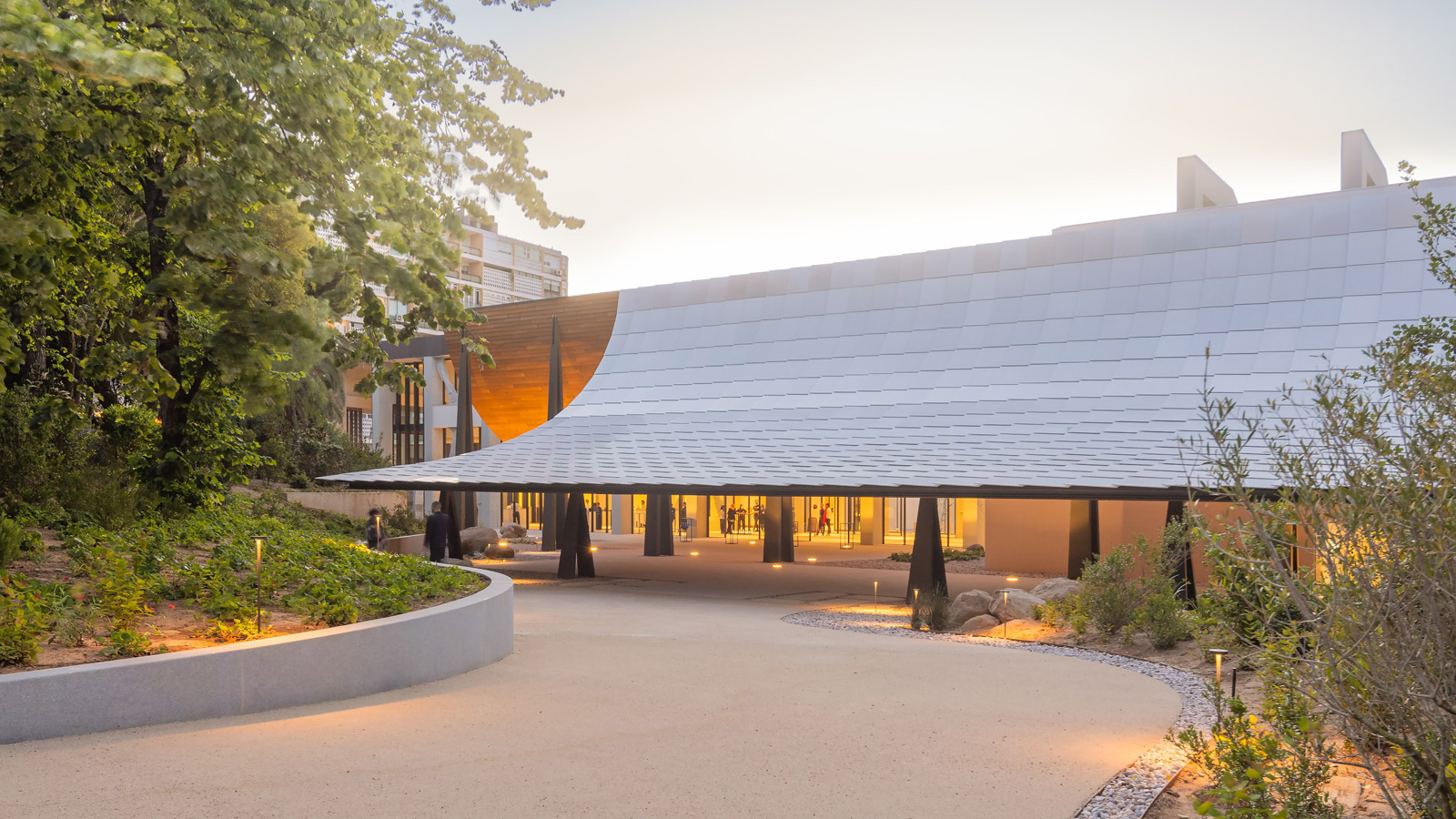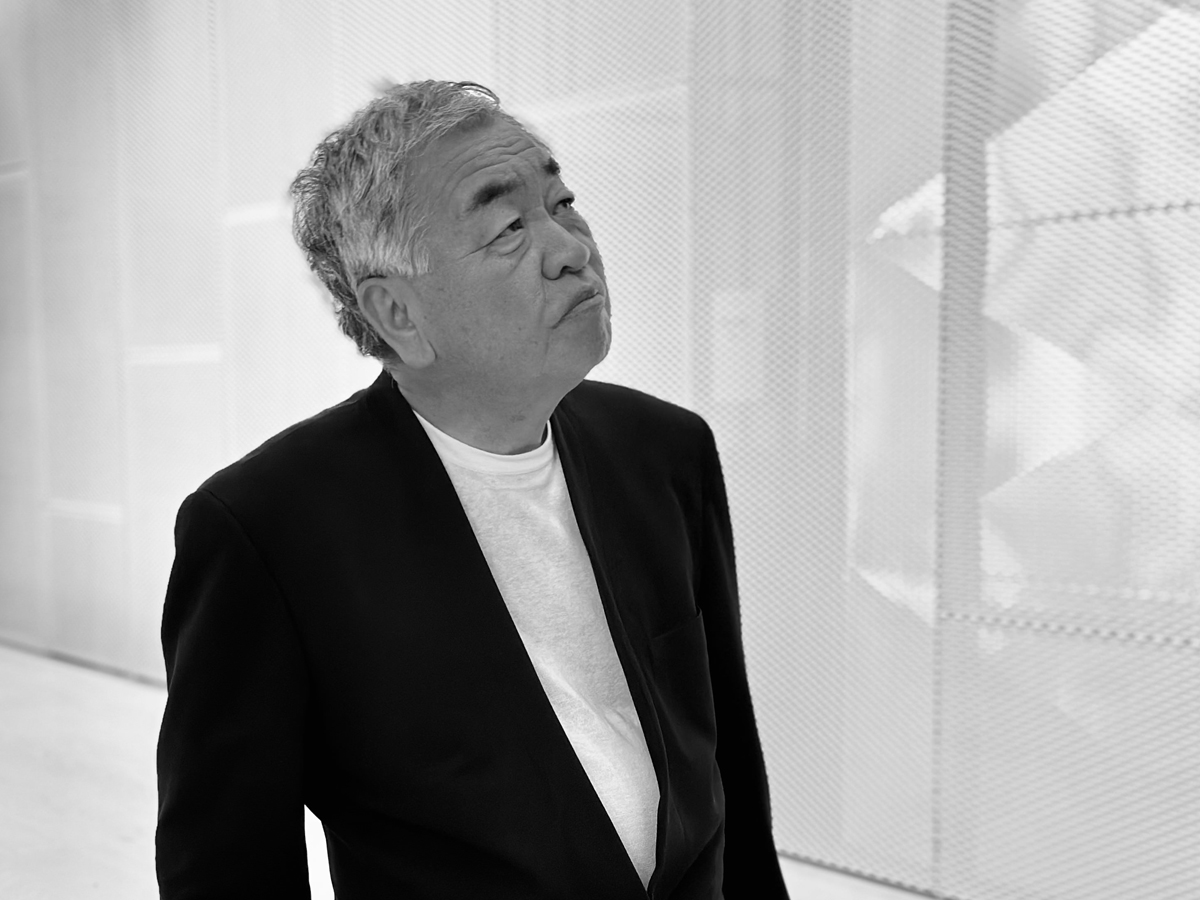
New building and garden
CAM’s building has been redesigned by Japanese architect Kengo Kuma, who collaborated with landscape architect Vladimir Djurovic to perfectly integrate architecture and nature.
Kengo Kuma completely reimagined the previous CAM – Centro de Arte Moderna Gulbenkian building, designed by British architect Leslie Martin and inaugurated in 1983. This major reconfiguration of CAM is part of a wider project that aims to establish a greater connection between the building and the Gulbenkian Garden.
Kengo Kuma’s project seeks to dissolve the boundary between these two spaces, proposing a holistic integration of all the elements of the landscape. The large canopy covered in white tiles with soft, organic lines which now marks the façade of the new building transforms its main entrance into an area of passage between CAM and the garden, designed for the socialisation of visitors. A space that can be both protective and relaxing, welcoming and liberating.
Kuma was inspired by the Engawa typology, a path protected by the eaves of the roof, not entirely inside or outside, which is commonly found in traditional Japanese houses. The Engawa concept is also reflected in various features of the building, from the design of new exhibition spaces to the opening of various access points.
The transparency of the volumes and the way the natural light falls inside are intended to underline the idea of CAM as an open and accessible art centre, where everyone is encouraged to make this space their own.
The Engawa and the way it translates into the building, with its organic lines and sheltering nature, also inspired the design studio A Practice for Everyday Life in developing CAM’s new visual identity.
The concept also extends to the mission of the new CAM, which proposes a multidisciplinary programme strongly committed to reaching diverse audiences and inviting to a more participatory experience.
In collaboration with landscape architect Vladimir Djurovic, the relationship between the surrounding nature and the building, which is now more immersed in the landscape, has been enhanced.






Vladimir Djurovic’s proposition for the South Garden elaborates on Portuguese architects Gonçalo Ribeiro Telles and António Viana Barreto’s original vision for the pre-existing garden, using only native flora.
The transition zones between CAM and the denser, more wooded area of the garden were blurred, conferring the whole a greater sense of unity and harmony.
With the extension of the Garden and its opening to the city to the south, CAM’s building will become the main gateway to the Calouste Gulbenkian Foundation and Gardens, allowing visitors to come into contact with a more experimental and innovative offer.
The project also creates a closer relationship between CAM and the other buildings of the Foundation, and a greater connection with the surrounding neighbourhoods and the communities that live and work there.
More Garden
The landscape architecture project for the new area of the Gulbenkian Garden, by landscape architect Vladimir Djurovic, is based on the language of the existing garden, an expression of the Portuguese landscape and of an ecological and poetic culture, adopting this striking character as inspiration for the new expansion.





The project proposes the creation of an ‘urban forest,’ defining a new landscape front for the Gulbenkian Foundation to the south. A resilient landscape with a high level of biodiversity, providing an environment where people feel close to nature, and creating habitats for wildlife, establishing a subtle, natural transition with the original garden.
The design of the space is based on naturalism, integrating the existing vegetation and adding plantings of native vegetation, incorporating winding paths that cross this ‘urban forest,’ leading the visitor to the Modern Art Centre and, beyond that, to the existing garden.

Kengo Kuma was born in 1954 and set up Kengo Kuma & Associates in 1990 (KKAA). Kengo Kuma's architecture opens up new relationships between nature, technology and the human being. Projects realised by KKAA can be found in more than 30 countries around the world. After years of teaching at Keio University and in Tokyo, Kuma is a university professor and professor emeritus at the University of Tokyo. Kengo Kuma has published several books, including 'Zen Shigoto (Kengo Kuma – the complete works, Daiwa Shobo)', 'Ten Sen Men (‘point, line, plane’, Iwanami Shoten)', 'Makeru Kenchiku (Architecture of Defeat, Iwanami Shoten)', 'Shizen na Kenchiku (Natural Architecture, Iwanami Shinsho)', 'Chii-sana Kenchiku (Small Architecture, Iwanami Shinsho)', along with many others.

Vladimir Djurovic (Lebanon, 1967) received his Undergraduate Degree in Horticulture from Reading University in England, and his Masters Degree in Landscape Architecture from the School of Environmental Design at the University of Georgia in the U.S. After working in the U.S. for several years, he returned to Lebanon to establish his landscape architectural practice in 1995. Since its inception, Vladimir Djurovic Landscape Architecture has been committed to the creation of landscapes that draw out the uniqueness of environments with a simplicity of gesture that gives nature the stage. Djurovic has been granted numerous international awards, and has focused on projects that address the pressing environmental and social issues facing us today.
Credits

